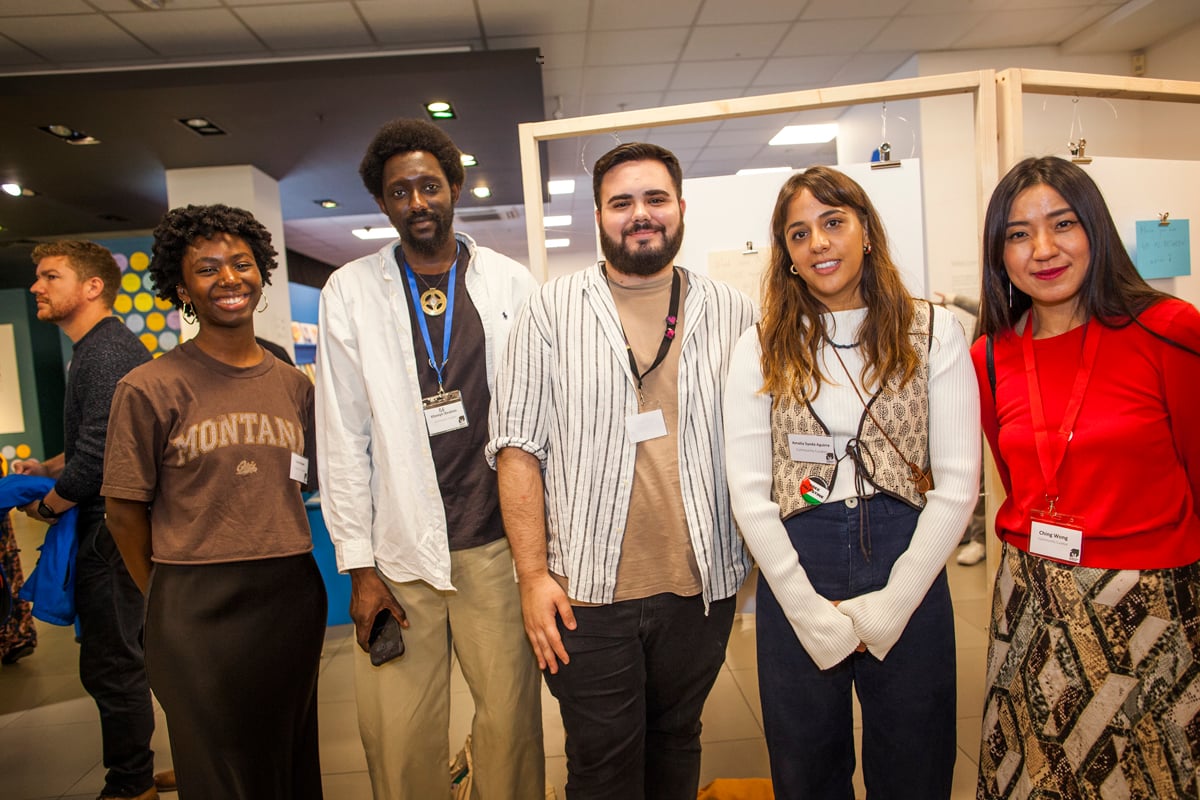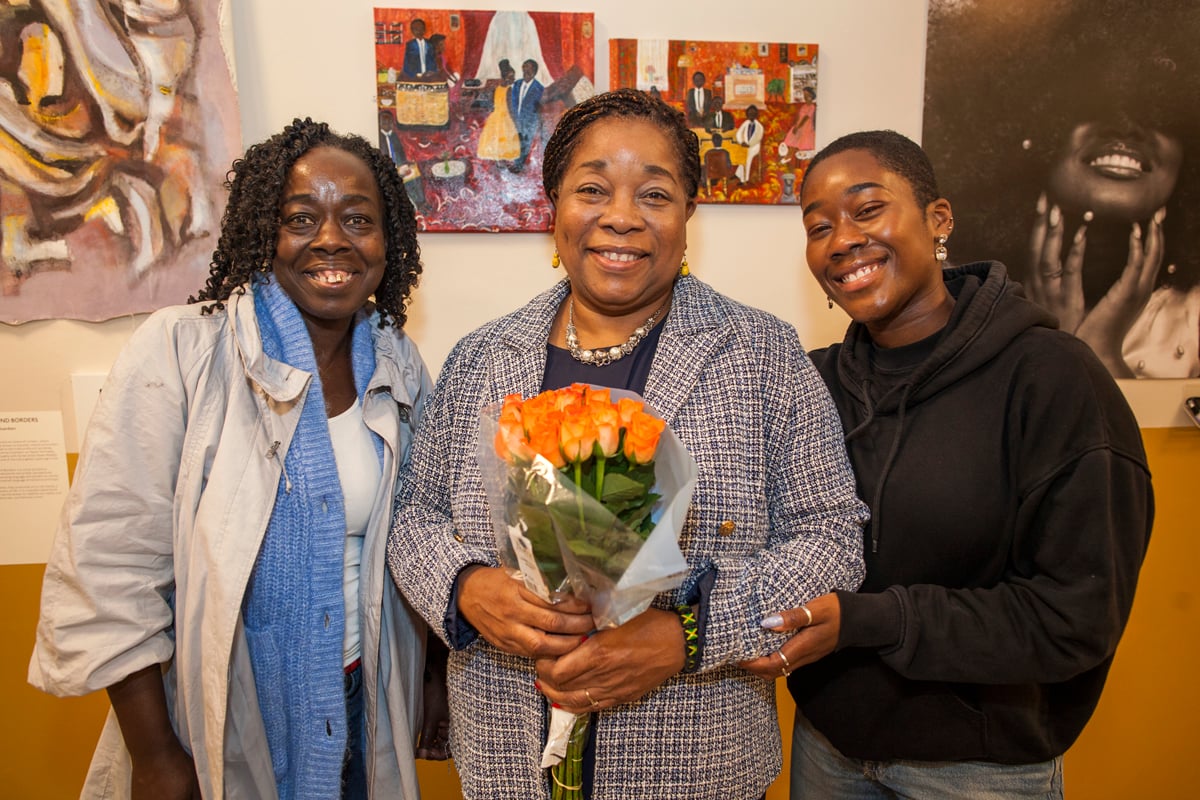
Community curators (l-r) Tunu Brown, Khevyn BE Ibrahim, Arber Gashi, Amalia Syeda Aguirre, Ching Wong
Photo: Elzbieta Piekacz
A museum honouring the history of migration
Despite a world-class museum sector and a complex history of migration, Britain does not have a permanent museum exploring the movement of people to and from these shores. Mona Jamil of the Migration Museum is working to rectify that.
Fenix, a museum exploring migration through art, will open its doors in Rotterdam in the Netherlands in May – the latest in a growing trend of museums around the world exploring migration.
But despite our long, rich and complex history of migration, why don’t we have a museum exploring how the movement of people over the centuries has shaped who we all are?
The Migration Museum, currently based in a temporary venue in south London, is aiming to fill this gap, using a collaborative approach to build projects, exhibitions and momentum for a permanent museum that will put migration at the heart of our cultural landscape – and our national story.
Beyond transactional engagement
Since 2020, our museum has been housed in a vacant retail unit in Lewisham Shopping Centre. Like many museums, our community engagement work has often been reactive.
We wanted to make the museum free and open to all to ensure local people especially felt ownership and pride over our space. Community hires and creative collaborations would take place, but relationships were often temporary and fleeting.
We decided to take action to approach community engagement in differently – beyond one-off events and exhibitions, beyond venue hire, and beyond transactional engagement.
So we established a People’s Panel and Network in 2022, bringing together people active in their communities in the local area. The panel acted as an advisory group, and we worked together on a series of workshops to co-produce our community engagement values at the Migration Museum.
A platform for community creativity
Through this we were able to embed people’s voices into the very core of the museum – implementing long term influence and power. The foundation of the museum rests on these values, ensuring that people’s voices are always represented.
The project culminated with a long-lasting relationship with local people and groups, and gave us a stepping stone towards a holistic approach to community engagement.
Reflecting on the project, we published a toolkit and evaluation and, based on the recommendations of our People’s Panel and Network, decided the best next step would be to create a dedicated community space for people to relax, reflect and to showcase artwork, and to develop opportunities for professional development, innovation and stronger connections.
Our community space celebrates diversity, shares local stories and acts as a platform for the creativity of Lewisham’s communities.
Community curators
We worked with five community curators to shape the creative programming of this space in 2024 and 2025. They all have lived experience of migration and a shared connection to Lewisham through living, working, studying, volunteering or organising in the borough as community activists and were selected based on their passion to serve local audiences, their interest in migration and their drive to develop their skills.
They are all first- or second-generation migrants or refugees, with roots from Bangladesh to The Bahamas. Using the space as a testing ground for future projects in our permanent home, they have been given free rein over key decision making.
As part of the programme, they underwent a period of training and guidance from both the museum team and external partners and visited other exhibitions to gain inspiration and interrogate the process of exhibition making.
Our curators reflected on their shared experiences, identities and interests, and put together an exhibition plan to represent this. Despite having very different backgrounds, a shared theme united them – a sense of ‘in between-ness’.
Continues…

Contributors to the Inside/Outside and All In Between exhibition at the Migration Museum. Photo: Elzbieta Piekacz
Liminal space of migrant identity
The resulting exhibition Inside/Outside and All In Between delves into the complex dynamics of migration and displacement, exploring the potential conflicts, parallels, blends and transformative journeys between the public and private spheres.
It also examines external and internal dimensions of ‘home’, outward expression and inner states of being, memory and imagined self and futures, between struggling with or embracing a new culture and identity.
The liminal space of migrant identity resonated not only with our curators but also local artists who submitted work in response to a call-out. Some were award winning artists who had exhibited internationally, while others struggled to identify as an artist.
One – Angelina Duke Alexander – shared the following: “From use of space to accessibility, to the mentally stimulating and nourishing substance of the exhibition itself, it was one of the most memorable and impactful projects I have seen in London – let alone had the honour of participating in.”
Participation is key to all our work. Visitors are invited to respond to prompts such as “Have you ever felt in between different worlds?” and “Where is home for you?” We’ve received lots of responses, evidence of the deep engagement visitors have with the exhibition’s content and themes – and with our community space.
Towards a permanent home
This exhibition will close at the end of March, when we will also be closing to the public in our current venue, as our lease is coming to an end. But this won’t be goodbye.
We aim to continue growing our community-led work as we move towards a permanent home in the City of London, opening in late 2027/early 2028. We will be developing our community curators programme reinstating our People’s Panel advisory group collecting 5,000 migration stories along the way.
Public discourse about migration is so often heated, polarised and dehumanised. Yet migration is a deeply human story. The Migration Museum wouldn’t exist without people’s stories, voices and contributions.
As we embark on the next phase of our development, we are determined to ensure that participation, collaboration and co-creation remain at the core of everything we do.

Join the Discussion
You must be logged in to post a comment.